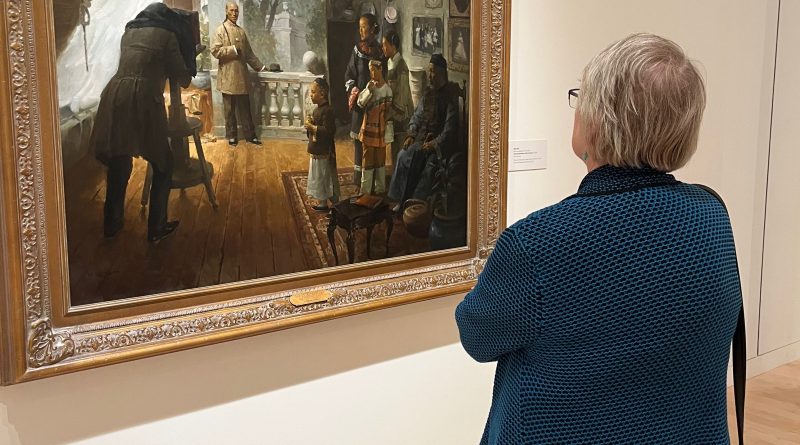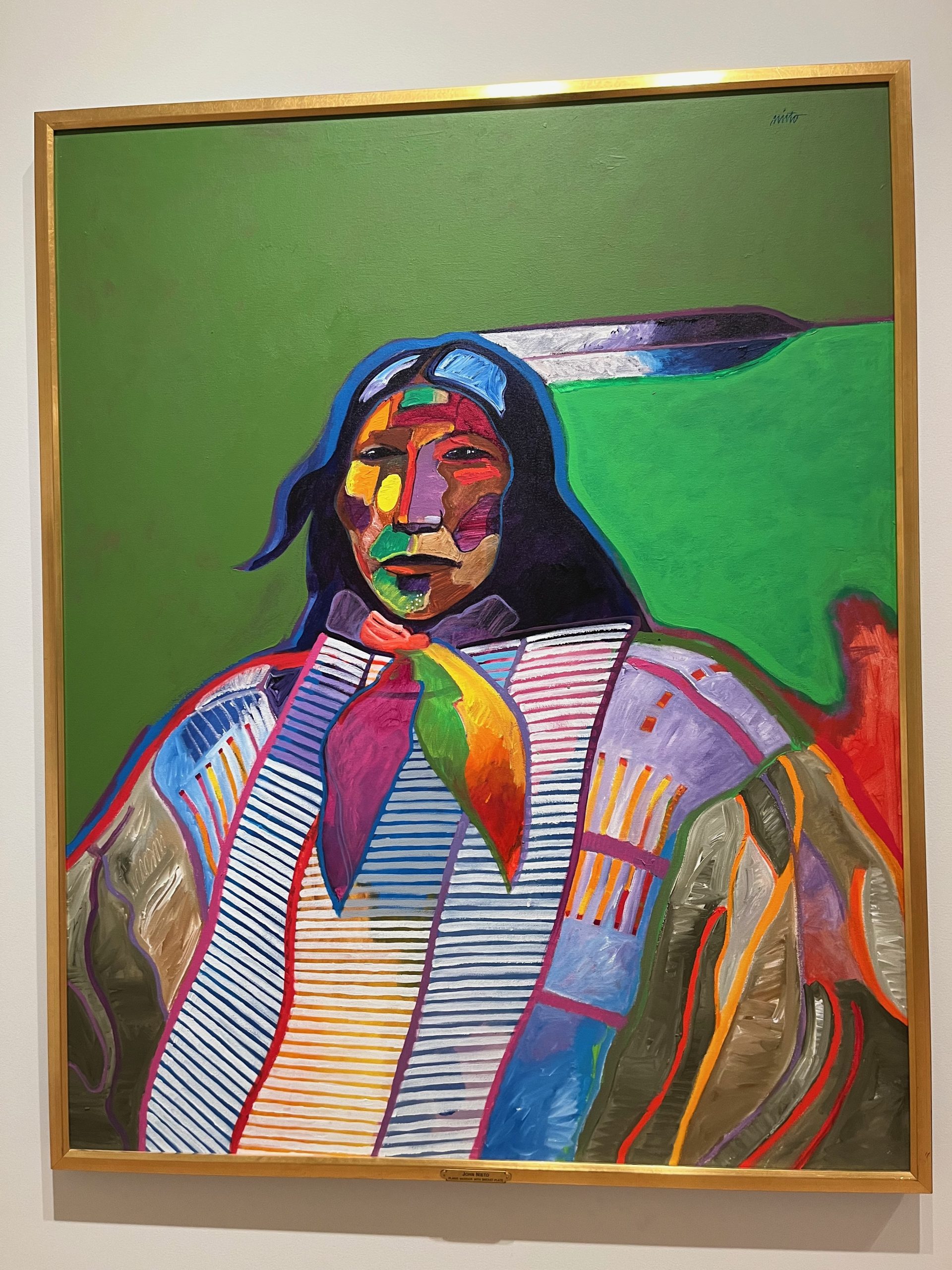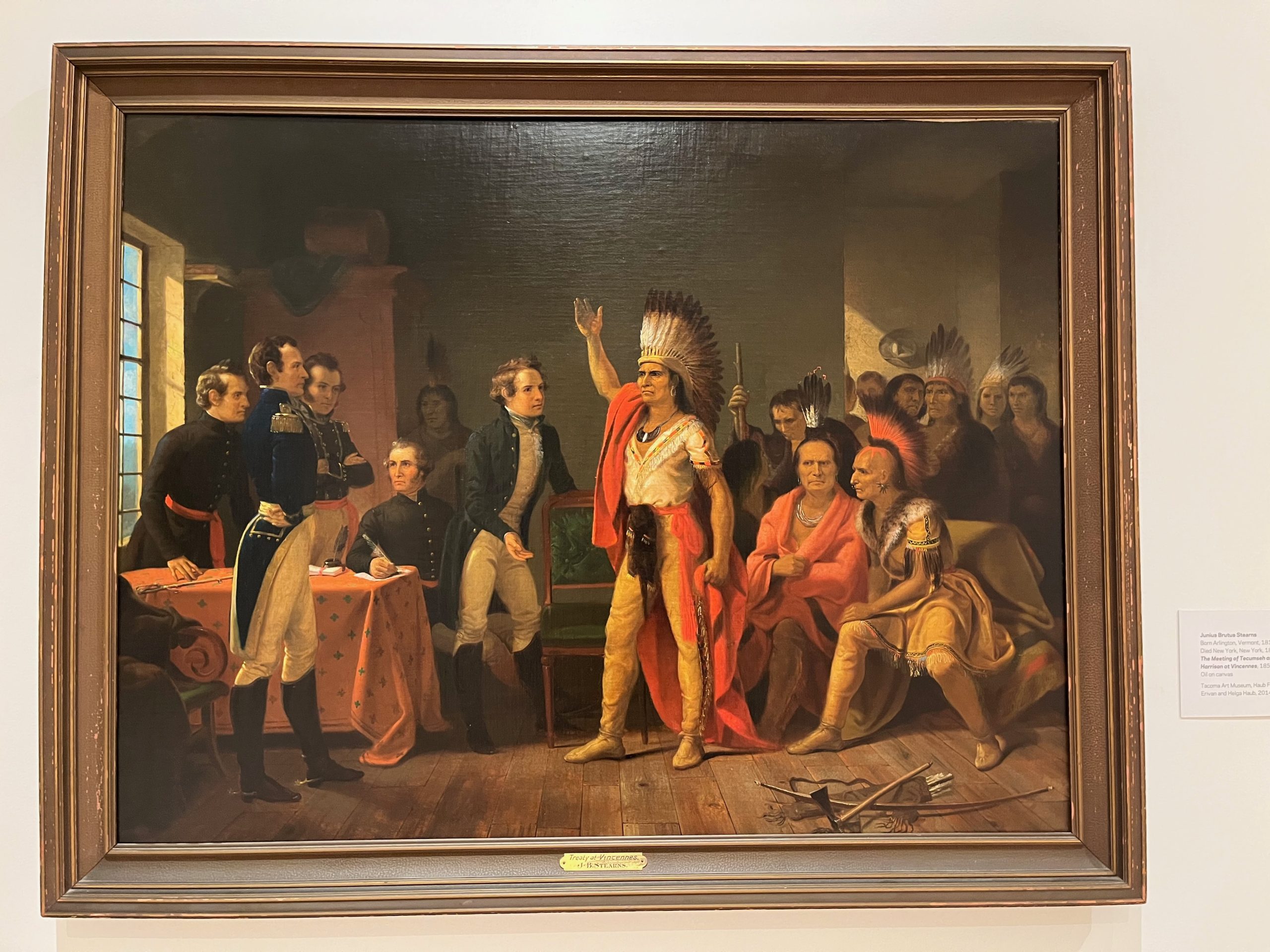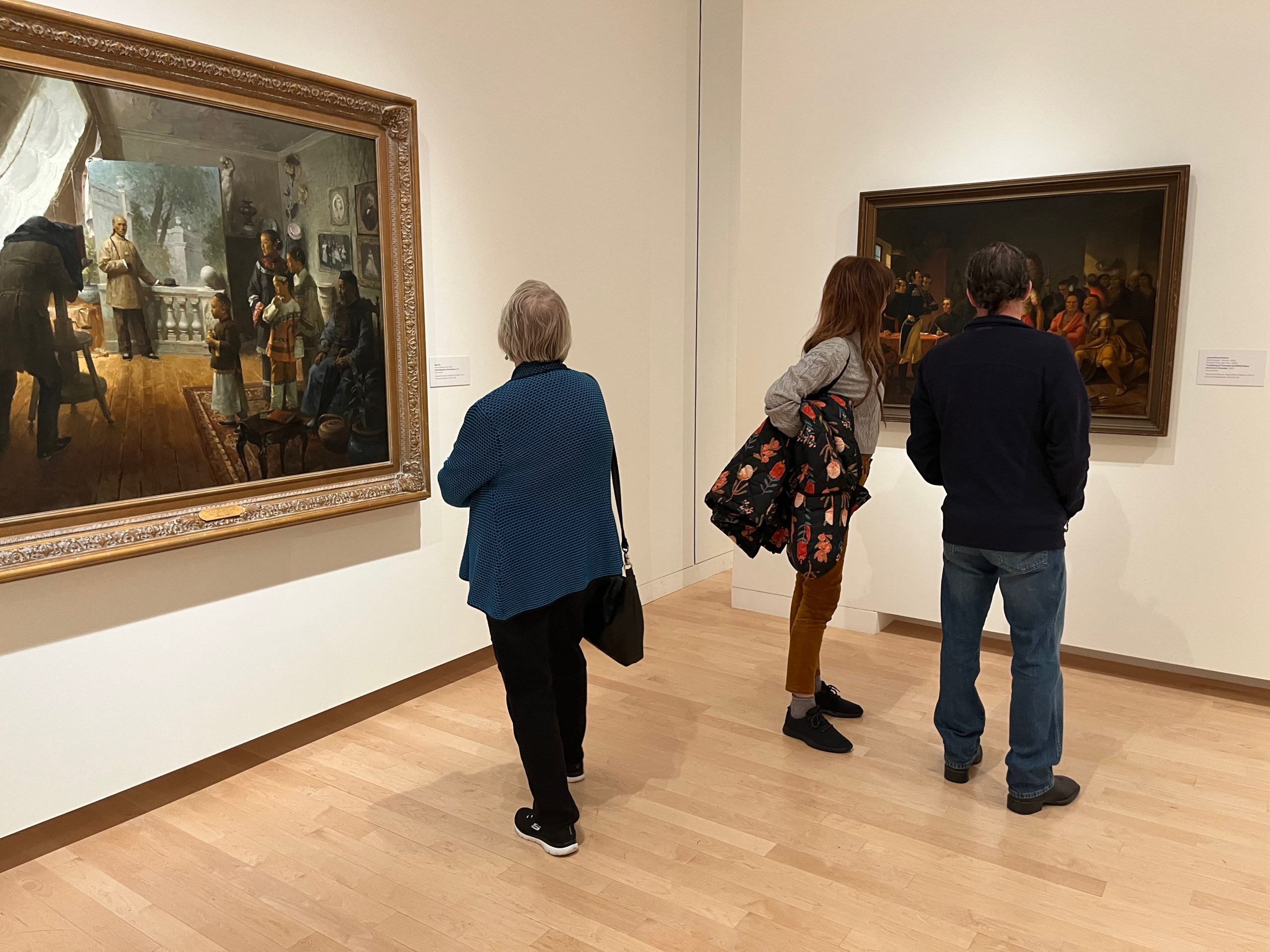As Thanksgiving Holiday nears, ‘Native Lands’ exhibit encourages reflection
This new exhibit at the Tacoma Art Museum explores American landscapes while acknowledging colonialism.
Efforts to acknowledge Native land are becoming more widely practiced. In many university classrooms, including at UWT, some faculty will take a moment to acknowledge the Indigenous peoples’ land they are on. To recognize and honor people who were there first, it is a way to respect other communities who were often mistreated by the government and mainstream public. In an attempt to right the wrongs of the past, this stance is often seen as a positive reflection of how our communities can heal and evolve.
Currently, the Tacoma Art Museum is presenting an exhibit called “On Native Lands.” Featuring paintings of open landscapes and colorful portraits of Native Americans during the 1700s to 1800s, the exhibit challenges viewers to consider the works through the lens of a Native American as opposed to a colonial perspective.
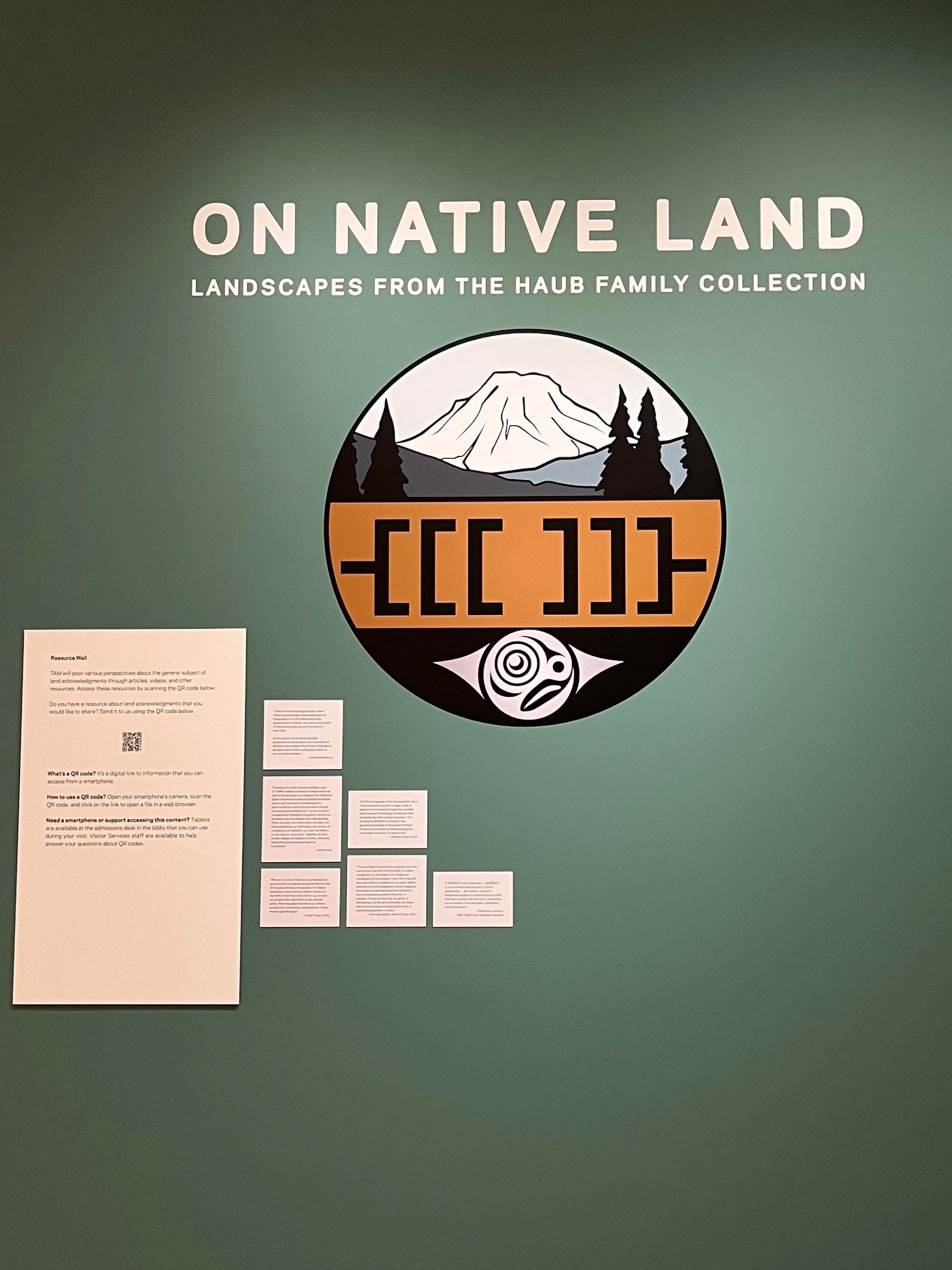
The lands in the paintings were owned by Native Americans. From the sixteenth through the twentieth century, the majority of their lands were stolen, claimed by colonizers. This exhibit aims to honor and acknowledge the land ownership of the original inhabitants. Next to each painting, they have a land acknowledgment and the name of the associated tribe. This exhibit recognizes more than 75 Native American tribes and their relationships to the lands depicted.
This is a significant point for Native American communities who feel that not enough has been done to rectify the past. For people interested in Native American history and their land appreciation, this exhibit offers a multitude of artwork reflecting their past and cultural significance.
Many of the artworks are vast western landscapes with incredible depth and perspective. They are mesmerizing pieces of artwork that capture the magnificence and essence of nature. The painting “Supreme Moment of Evening” is a clear example of this boldness and beauty. The painting is a wide shot of the Grand Canyon during the mid-evening. You can see the light hit the tops of the canyons and orange-yellow trees. The light illuminates all the brick red-orange colors of the canyon’s sedimentary rock, the multiple ring layers peering through and steep hills below them. The artist, Curt Walters, used a color palette of reds, oranges and yellows. He creates depth with his dark shadows and strong use of red in the painting.
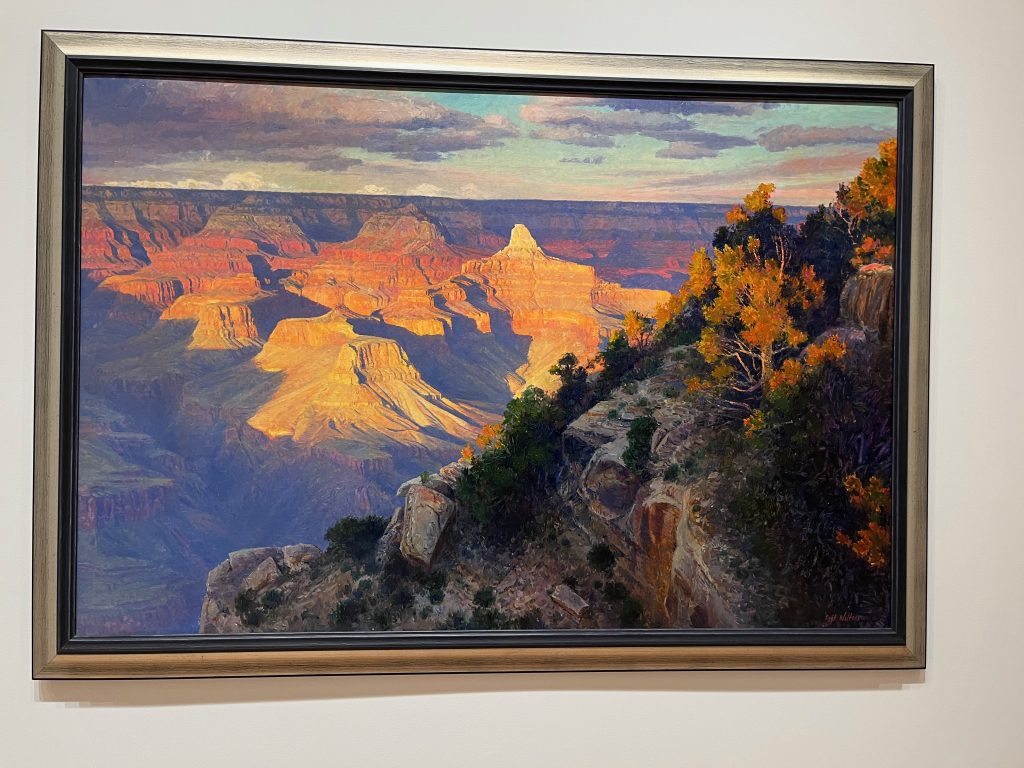
The painting gives acknowledgment to the Hopi Tribe, Las Vegas Paiute Tribe, Navajo nation and San Juan southern Paiute Tribe. It is one of the 14 landscape artworks that recognizes Native lands.
The museum also showcases several portraits of Native Americans as well. One called “Native Warrior with Breastplate” features an Indigenous person posing in a colorful garment. It’s painted with vibrant tricolors of yellow, red and green to paint his face and scarf. In comparison to many ancient breastplates, Native American breastplates were often used more symbolically. They were used as protection against arrows and spears in battle but also for their decorative or medicinal qualities. Native Americans used them for Native dances and ceremonies, which many tribes still do today.
Some of the paintings showcase moments between indigenous people and Europeans dating back to the 1700s and 1800s. The painting “The Meeting of Tecumseh and William Henry Harrison at Vincennes” (1851), depicts a meeting between two military leaders, Tecumseh of the Shawnee Tribe, and William Henry Harrison, who was the ninth President of the United States.
The meeting was to address the fact that Native lands were being treated as common property and not the fact that they already lay ownership to the Indigenous peoples. Tecumseh told Harrison that the U.S. was not justified in drawing up treaties that assumed rightful ownership to anyone. “This piece of land, we do not wish you to take it,” said Tecumseh. It should be noted that this conversation was recorded by Harrison and is his interpretation of the events.
At the time, many of the Natives’ lands were being taken by colonizers like Harrison. Native Americans like Tecumseh and his people (Tecumseh’s Confederacy) eventually fought back but ultimately lost. This painting depicts one of the many interactions Indigenous people had with colonizers.
There are many more pieces on display at this exhibit, which will be on display until January 14, 2024. If you are interested in attending, you can visit the Tacoma Art Museum from Wednesday to Friday. On Thursdays from 5-8 p.m., the museum is open to the public for free. For more info about this exhibit or the museum click here:

